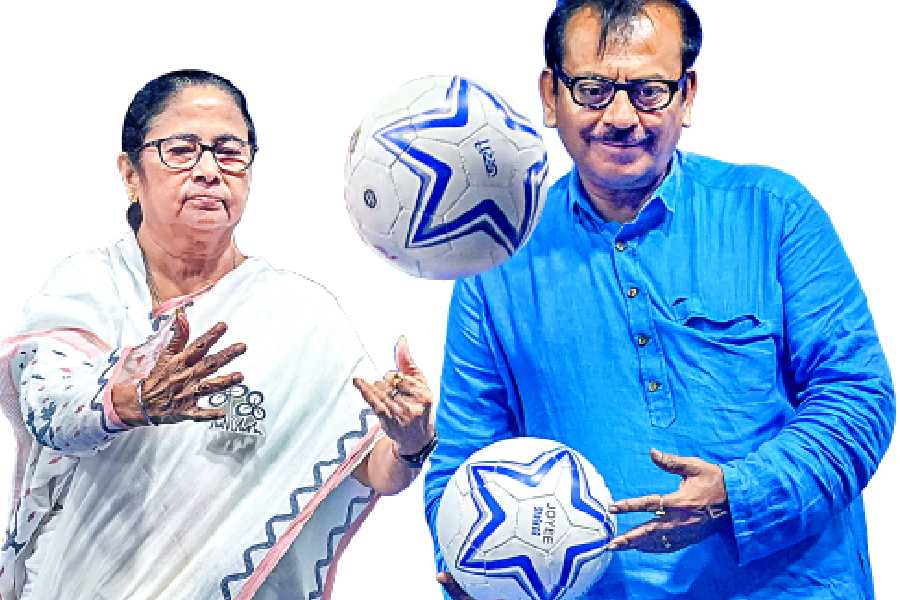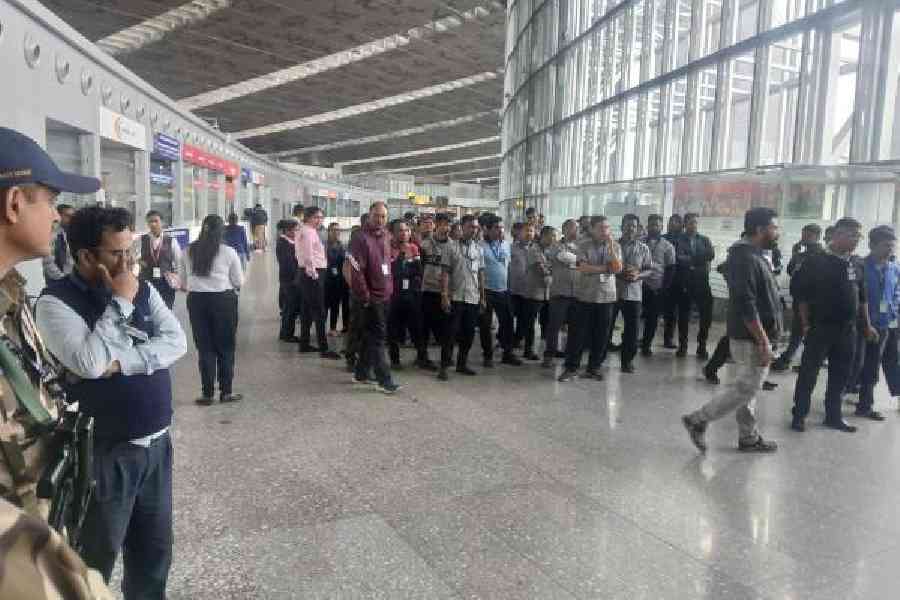-

OF MYSTERY AND SURVIVAL: Author Gaiutra Bahadur
In the beginning there was a boat. Later there was a machete, and violence. In Gaiutra Bahadur's seminal book Coolie Woman, she quotes a woman born in a ship bound for the West Indies in 1888. 'On that mad ocean I was born, on that mad ocean we came to life.'
I meet Bahadur at the National Maritime Museum in Greenwich, where we are suitably surrounded by boats. There are boats from Britain's imperial past, boats that showed her power over the seas, paintings, compasses and treasures. Bahadur is speaking at the Atlantic Gallery of the museum which showcases 'Slave, Trade and Empire', an apt setting for her book.
She is nervous about her voice which she is losing after several interviews, including one on BBC Radio Four's flagship Woman's Hour. She has a quiet presence, but it is clear that there is a steely side to the 38-year-old New Jersey-based journalist whose articles have been published in The New York Times book review, The Nation and The Washington Post.
It was the search for the story of her great-grandmother, Sujaria, an indentured labourer who left India for Guyana on board The Clyde in 1903, that led Bahadur on her journey. All she knew was that Sujaria had taken the boat, four months pregnant. She was 27 and the ship's records show that she was travelling alone. The space next to the name of her husband was left blank. She gave birth two months prematurely on the boat to Bahadur's grandfather. It was a traumatic labour as the baby was born legs first. Sujaria called him Lal Bahadur (bahadur for brave). It was not the family name of the man she married later. She had named him on the stormy seas just as she had wanted to.
Born in Guyana, Bahadur lived in the house standing on wooden stilts in the middle of the sugar cane fields. It had been built by her grandfather. In 1981, the family left Guyana, taking one final photograph outside the house. She was six. No boats this time; instead, a flight to New York and a new life. Bahadur grew up in New Jersey, directly across the Hudson river from Lower Manhattan, listening to her grandmother's bhajans, watching Hindi films broadcast on a channel on Sundays. She was told not to play outside when racist 'Dot Busters' terrorised Indian households in Jersey City and finally went on to graduate in English literature from Yale, followed by a degree at the Columbia School of Journalism. She won the Nieman Fellowship at Harvard in 2007 and was working on The Philadelphia Inquirer when she became one of 70 journalists to be made redundant.
'I thought I would take a risk and do something. I felt it was the right moment to do the story,' she tells me. The snippets of her great-grandmother's life had haunted her for 15 years and it was time to work on it.
Bahadur began to trace the story, spending over two years in archives in Britain and the Caribbean. She was a on a shoe-string budget, but being single probably helped as she had only herself to support. It was not an easy task. The records of The Clyde had been destroyed, so there was no account of the journey itself. Also, there was nothing recorded in Sujaria's voice, no letters, no memoirs, barely any documents. The journalist in her made this part of the narrative. Throughout the book, Bahadur asks questions. Why did Sujaria board the ship, whose baby was she carrying, how did a high-class Brahmin woman agree to cross the kalapani? Was she kidnapped, was she running away? Was she a prostitute? How did she feel as she reached Garden Reach in Calcutta and boarded The Clyde? Did she know she would not return?
'When I started writing, I had a sense that I wouldn't solve the mystery of her exit from India. I actually learned a great deal more about the texture of her life in Guyana than I thought I ever would. Through aunts and great-aunts and great-cousins, I learnt about her life as a worker and a wife. I learned a bit about her personality — sparkling, charismatic — and even the fact that she smoked a clay pipe.'
It was Bahadur's plan not to actually solve the mystery. The book is a record of the women who made their way to the Caribbean, whose stories remained elusive, partly because they wanted it to be that way. Sujaria remains a ghost presence, an unsolved mystery of a woman who survived. It is also a tale of extreme violence that the women faced from their partners on the plantations. The machete — to be used in the sugar cane fields — was often the weapon used against them.
The decision to use the word 'Coolie' in the title came after some soul searching. The word is seen as derogatory in the Caribbean, while it is often used jokingly by the Indians themselves. Bahadur's reasons were simple. 'It was a fact,' she says. Her grandmother was a high-caste Brahmin, but she left India as a coolie. The word coolie carried the baggage of colonialism on its back. 'It bears the burdens of history,' she adds.
For her research Bahadur travelled to her great-grandmother's village of Bhurahupur in Bihar but hit a dead end. She worked in the archives in Britain, Trinidad and Guyana, reading, cataloguing and analysing nearly 77 reports on 77 indenture voyages to the Caribbean. Transcripts of inquiries into plantation uprisings, newspaper clippings of murders of women by their partners, confidential dossiers of overseers who slept with Indian women on the plantations, all provided a narrative that built around the story of Sujaria.
After the abolition of slavery in Britain in 1833, indentured labourers from the colonies were needed to work the sugar cane fields in the Caribbean. The first ship carrying indentured labourers sailed from Calcutta to British Guiana in 1838. While the indentured labourers declared that they were going voluntarily, the conditions of their transport and work were little better than their slave predecessors. From 1838 to 1917, the British transported a million Indians, half of them to the Caribbean, to grow and cut sugar cane. The proportion of women to men was less than half. For every ship that sailed there had to be 40 women to 100 men. The shortage of women led to exploitation, multiple partners and often rape and violence.
Was it painful to write about the violence, specially when it was a part of her personal history, I ask her. She agrees that the chapters dealing with the violence against women were the hardest to write. 'I coped in two ways: by acknowledging my desire to look away and working that into the text and by taking refuge in the sheer level of detail to be found in the newspaper accounts of historic violence. I hoped it would be a way of restoring humanity to women who had been dismembered both literally and figuratively.'
And how did she feel about her great-grandmother at the end of her search? Bahadur's response is immediate. 'Great admiration,' she says. 'In the end whether she was kidnapped into indenture, or chose it, or some combination of the two, I do see her as a model of courage. She gave her son born on the seas the name of Lal Bahadur, son of a hero... I see her as one.' As for herself, the great-granddaughter of the 'Coolie Woman', she felt that she was doing her filial duty, by recovering the stories that were lost and carrying them forward into the world, freeing it 'from any vestige of shame to one of pride'.
She keeps a machete at the entrance to her garage. In theory it is for chopping coconuts, she says jokingly. But the rusty cutlass serves a more ceremonial role as it guards her entrance in a Ganesh-like way. In Caribbean history, the cutlass is seen as a symbol of resistance, and Bahadur likes it that way.











